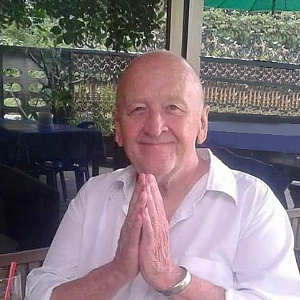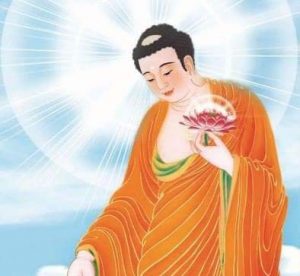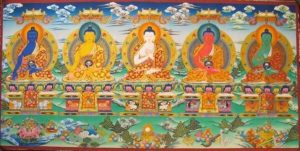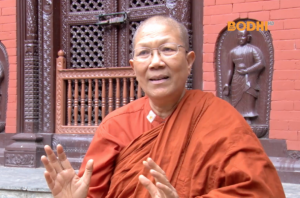
Concerning the conventional view of the body, the influential Thai monk Luang Phor Viriyang Sirintharo wrote:
The first media is the body. It refers to our physical body which is capable of obtaining all of the feelings and emotions and communicating through its five senses. The body can co-function with the mind, and it is also under its control.
One usually thinks of the body as one’s whole self.
Since the lifespan of our body is 50 to 100 years, human beings usually compete with their lifespan and try their best to use their bodies to the fullest potential.
(Viriyang 22)
In other words, for better or for worse, in the conventional sense, we try to get the most out of our lives and our bodies for as long as we can, for as long as they last—especially in terms of physical pleasure. This is because in our minds, especially in present-day culture, we mistakenly consider the body as being a source of satisfying sense experiences, as being beautiful, as being pleasurable and satisfying, despite the obvious fact that we are growing older and becoming weaker, and inherently knowing we are slowly dying.
The so-called beauty of the body—the body beautiful—is a deeply embedded socio-cultural myth which the mind just does not want to let go of and will not give up. The body, we must accept (our own body or that of another) is not a beautiful object in the way that would desire it to be, in the way we see in movies or on TV. The body is not here in the world solely for the purpose of fulfilling our dreams.
Despite the truth that the body is not at all what we imagine it to be within the distortions of our mind’s eye, we foolishly continue to believe in the reverse of the truth. Ironically, we often ignoring even our own bodily aches and pains as undeniable, physical indications of decay, deterioration, and dissolution, contrary even to obvious visual and physical discrepancies that anyone else can see.
In summary, despite all obvious evidence to the contrary, we continue to hang on to wrong beliefs about the pleasing and satisfying nature of the body. We do this with such a stubborn tenacity that it becomes almost impossible for most men and women to shake it loose and see the actual corporeal truth of the body—the way it really is—as being in a state of slow decay and dissolution.
Indeed, the psychophysical organism actually enjoys becoming and being an economic, commercial, product consumer in the mundane physical world. Even when it has the occasional insight that, socio-economically, people today are overtly and subliminally being trained and bred by advertisers, marketers, and the media within the popular structure of modern society. This takes place especially through movies and TV, to make us even more willing and enthusiastic consumers, whom manufacturers and entrepreneurs can easily continue to stimulate and cultivate, to train and brainwash, so that we will continue feeding—with ever-new-generations arising—on waves of ever-arising needs, indefinitely and forever—if the world might ever be said to last that long.
Everything is nourishment. And in such a scenario, those who feed our needs are also well-rewarded, well-provided for, and well-nourished through their manipulative marketing strategies and contrivances. In plain words, such service-providers live off of supplying our unexamined, unskilful wants and needs. There is hardly an ounce of morality in it. It’s merely consumer greed taking advantage of people’s inherent weaknesses, wants, and desires for psychophysical stimulation and nourishment. Not so much for the good of society as just a way to make money, merely for profit’s sake, wherever there is a market to be exploited.
Such greed, based on unnecessary need, is morally indefensible from both the consumer and the producer perspective. But there are very few in today’s world who would want to see it that way. People feed wherever there is need. And this, it seems, has become the predominant way of life.
Why is this so?
The answer is as follows: If one is the need for nourishment, and two is the mind and the body (Pali: nama-rupa), there are as yet three things of which so-called “normal mortals” in the conventional, socio-cultural sense, are wholly ignorant. These are the three things that common men and women do not want to know, which they unconsciously want to overlook and ignore because their view is based on wrong seeing, wrong attitude, and wrong view.
These three things are the Three Signata, namely: impermanence (anicca), suffering (dukkha), and non-self (anatta)—the three causes of ignorance (avijja) that common, everyday people do not know about.
The causes of human arising and excruciating existential anguish may be probed and, preliminarily, diagnosed in sequence by disclosing some perhaps not-so-well-known perspectives concerning perception, deception, and insight meditation. To echo Luang Phor Viriyang’s quotation on the body cited above, it is our physical body in which the feelings and emotions arise, through sequences of perception of contact to the five senses and reactions and actions of the mind.
Concerning the body, a common, everyday person in today’s world usually thinks of their body as being solid and his consciousness as somehow permanently connected to their body and to other perceptual objects in what they consider to be “their world.” People simply believe that everything they see and conceive of, including their bodily selves, is fixed and permanent, to be used for fulfillment and enjoyment, although this is certainly not true and is based on delusional view.
A human’s identifying bodily perception and arising consciousness with any sense of a permanent self is actually based on ignorance (avijja)—delusion about self-in-the-world and about the way things really are.
Such wrong view is dependent, as we have indicated, on the delusive compulsion to nourish an ego-centric need for a substantial sense of self-assurance, for an undeniable and absolute guarantee that we will always be able to nourish and feed our personal desires for continuing self-satisfaction and continuing existence. An assumed satisfaction and existence that we wish to imagine can never be taken away from us.
This wrong view arises out of the dangerous and harmful part of the mind that greedily reaches after the things that it hopes and thinks can guarantee lasting happiness. These might include a good family, a good home, and good neighbors, and even existence for eternity.
But in the long run, because of the impermanent nature of all things, this actually leads to a continuing and disturbing sense of uncertainty, to insecurity instability, and to unhappiness and unsatisfactoriness because—as we all know—things almost never turn out to be as we have “dreamed them to be.”
References
Viriyang, Luang Phor. 1999. Meditation Instructor Course I. Bangkok: Willpower Institute (private printing of internal handout.)
Related features from BDG
Young Voices: What to Do with Impermanence
The Promise of Impermanence
Impermanence and Nothingness













